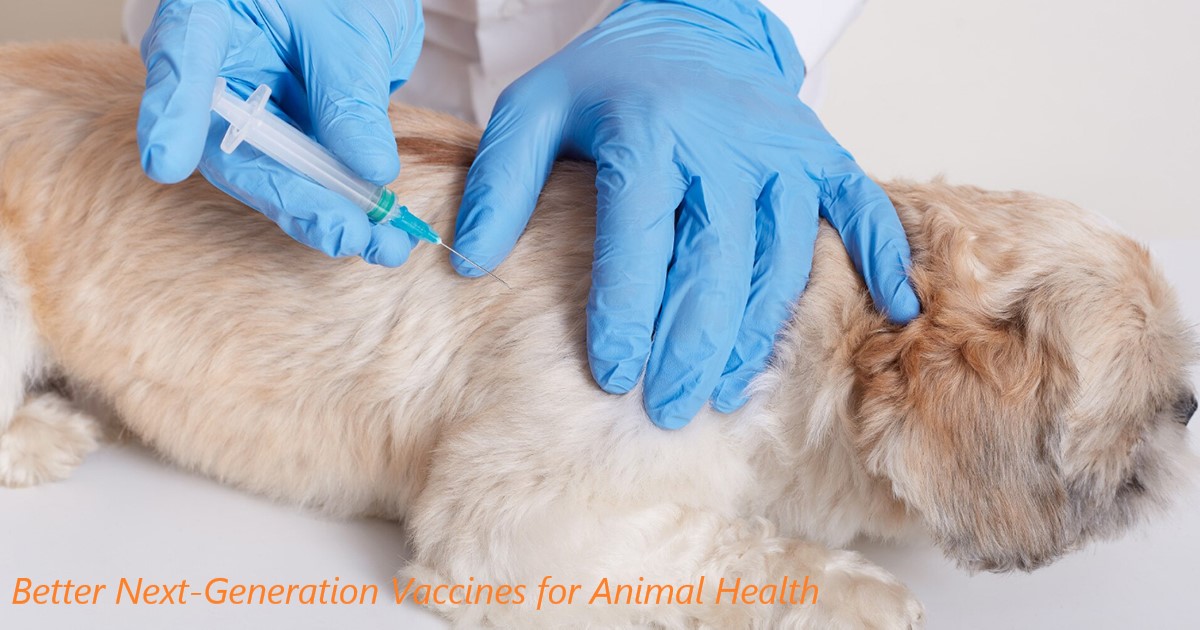Next-Generation Vaccines for Animal Infectious Diseases
A special issue of Vaccines (ISSN 2076-393X). This special issue belongs to the section "Veterinary Vaccines".
Deadline for manuscript submissions: closed (31 October 2025) | Viewed by 12400

Special Issue Editors
Interests: interplay between rabies virus and type I IFN signaling pathway in the central nervous system; the application of reverse genetics technology in the study of rabies virus; pathogenesis and for the development of novel rabies vaccines; development of oral vaccine vectors for infectious diseases of animals
Special Issues, Collections and Topics in MDPI journals
Interests: epidemiological characteristics and variation regularity of pathogen; regulate and control network of interaction between pathogen and host; new vaccine development
Special Issues, Collections and Topics in MDPI journals
Interests: prevention and control of virus diseases in aquatic animals
Special Issues, Collections and Topics in MDPI journals
Special Issue Information
Dear Colleagues,
Vaccines play a pivotal role in safeguarding against animal infectious diseases, which not only impact global livestock production but also pose a risk to human health and security. The financial consequences of such diseases, ranging from production losses to trade restrictions, are immense. Vaccines, therefore, serve as a critical front-line defense, preventing, managing, and sometimes eradicating diseases. Traditional vaccines, though effective in certain cases, face challenges in terms of safety, efficacy, and speed of deployment. Next-generation vaccines offer enhanced efficacy and stability compared to traditional vaccines, owing to their precise targeting and controlled release mechanisms. These vaccines hold promise for the future, revolutionizing animal infectious disease prevention and control through improved immune response induction, broader pathogen coverage, and simplified administration protocols. We invite researchers working in diverse areas of next-generation vaccines research to contribute their insights and expertise to this exciting field, contributing to the global effort against animal infectious diseases.
This Special Issue cordially invites submissions of original research and review articles focusing primarily on the preclinical and clinical development of vaccines in the field of prevention and control of animal infectious diseases, including novel vector-based vaccines, new adjuvanted vaccines, LNP-mRNA vaccines, VLP vaccines, polymeric/inorganic nanoparticle vaccines, self-assembled protein vaccines, biomimetic nanoparticle vaccines, and so on.
Dr. Yongwen Luo
Prof. Dr. Huiying Fan
Dr. Qing Wang
Guest Editors
Manuscript Submission Information
Manuscripts should be submitted online at www.mdpi.com by registering and logging in to this website. Once you are registered, click here to go to the submission form. Manuscripts can be submitted until the deadline. All submissions that pass pre-check are peer-reviewed. Accepted papers will be published continuously in the journal (as soon as accepted) and will be listed together on the special issue website. Research articles, review articles as well as short communications are invited. For planned papers, a title and short abstract (about 250 words) can be sent to the Editorial Office for assessment.
Submitted manuscripts should not have been published previously, nor be under consideration for publication elsewhere (except conference proceedings papers). All manuscripts are thoroughly refereed through a single-blind peer-review process. A guide for authors and other relevant information for submission of manuscripts is available on the Instructions for Authors page. Vaccines is an international peer-reviewed open access monthly journal published by MDPI.
Please visit the Instructions for Authors page before submitting a manuscript. The Article Processing Charge (APC) for publication in this open access journal is 2700 CHF (Swiss Francs). Submitted papers should be well formatted and use good English. Authors may use MDPI's English editing service prior to publication or during author revisions.
Keywords
- LNP-mRNA vaccines
- VLP vaccines
- polymeric/inorganic nanoparticle vaccines
- self-assembled protein vaccines
- biomimetic nanoparticle vaccines
- novel vector-based vaccines
- new adjuvanted vaccines
- nanovaccines
Benefits of Publishing in a Special Issue
- Ease of navigation: Grouping papers by topic helps scholars navigate broad scope journals more efficiently.
- Greater discoverability: Special Issues support the reach and impact of scientific research. Articles in Special Issues are more discoverable and cited more frequently.
- Expansion of research network: Special Issues facilitate connections among authors, fostering scientific collaborations.
- External promotion: Articles in Special Issues are often promoted through the journal's social media, increasing their visibility.
- Reprint: MDPI Books provides the opportunity to republish successful Special Issues in book format, both online and in print.
Further information on MDPI's Special Issue policies can be found here.






